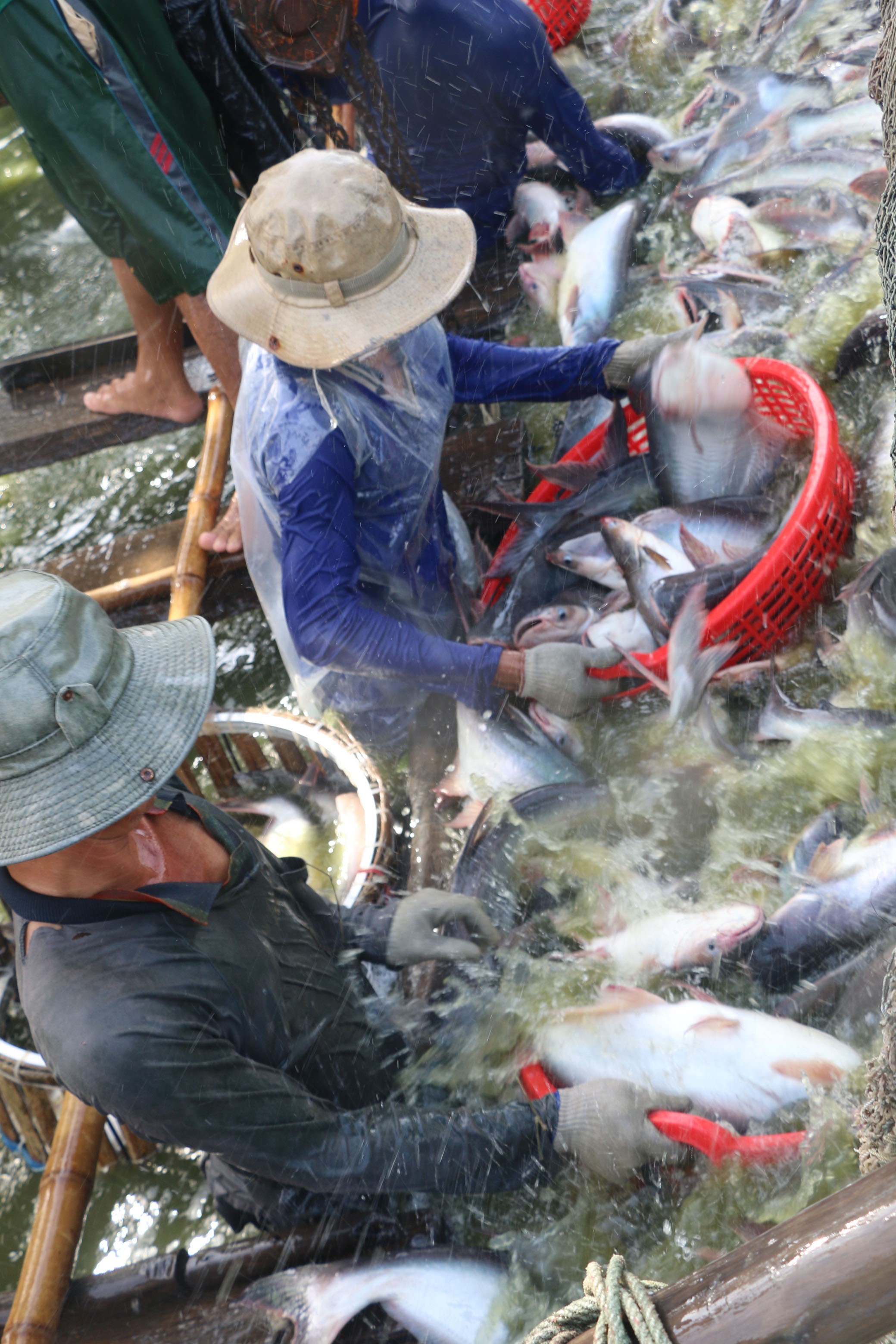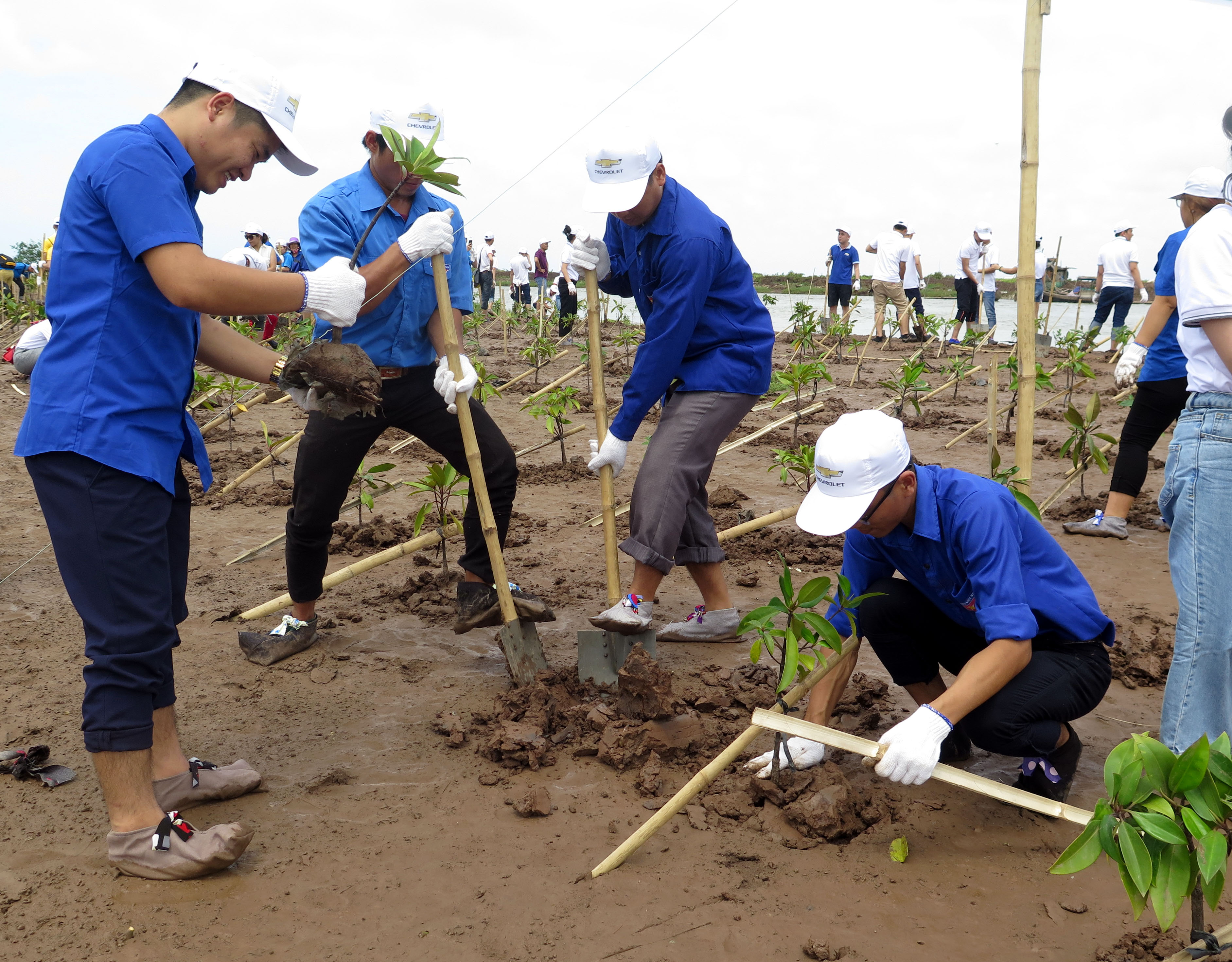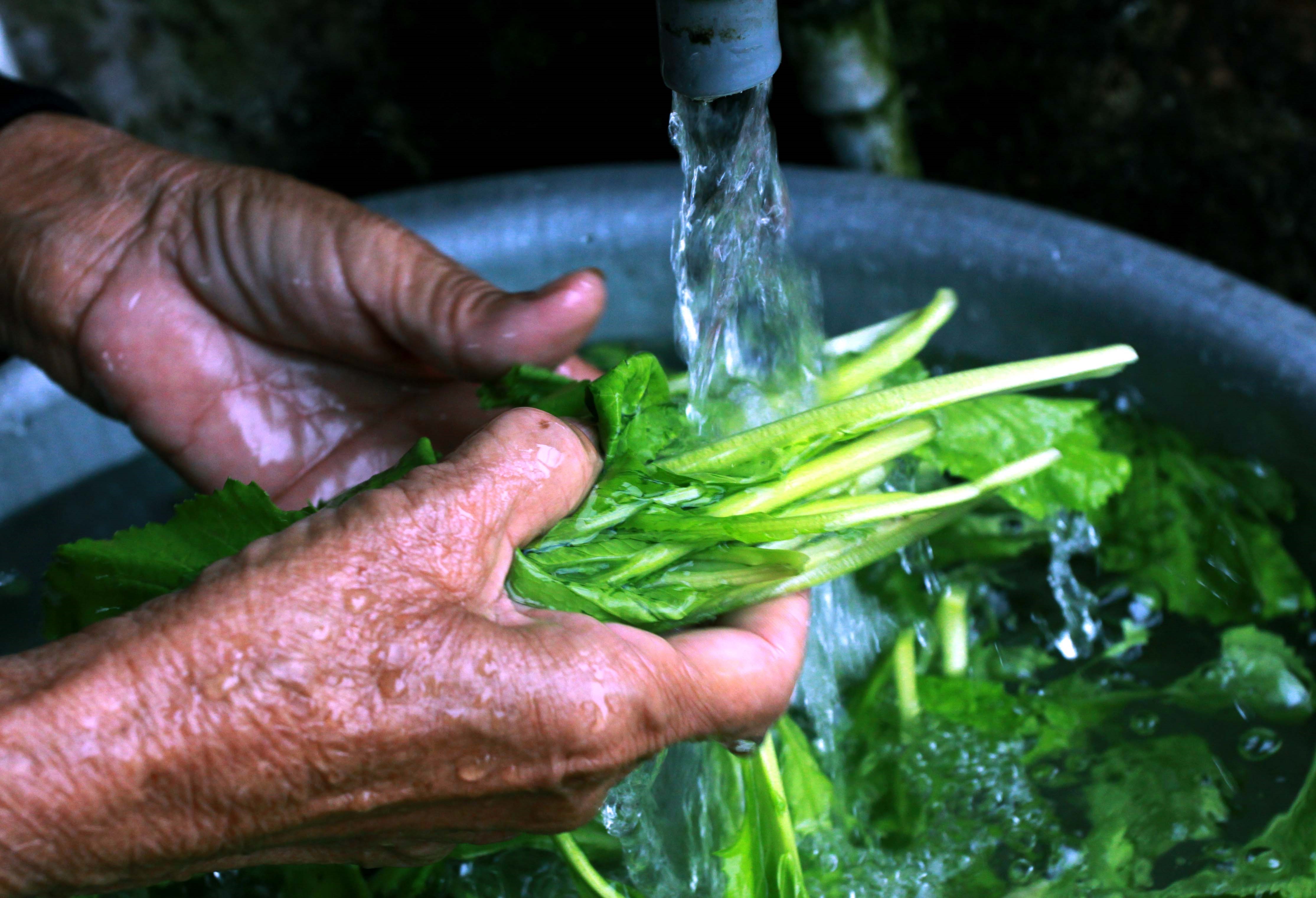The Asia-Europe Meeting (ASEM) Conference on Climate Action to Achieving the Sustainable Development Goals – Ways Forward on June 18-20 in Can Tho city is one of the most important inter-regional events on climate change hosted by Vietnam. It is also the first ASEM initiative in its third decade of cooperation on climate change response toward sustainability.
It is an initiative of Vietnam which was approved at the 13th ASEM Ministerial Meeting last November in Myanmar and won support and sponsorship from many countries, , including Australia, Denmark, Myanmar, Finland, the Netherlands and Italy.
The event’s four plenary meetings focused on discussions on development in the context of climate change, building capacity to adapt to climate change, actions in response to climate change which feature the role of relevant parties, and shaping the future which promotes Asia-Europe climate partnership for sustainable development.Attending the event were nearly 200 delegates from 53 ASEM members, leaders of ministries, sectors and 13 Mekong Delta localities in Vietnam.In his opening remarks, Deputy Minister of Natural Resources and Environment Le Cong Thanh said that Vietnam is assessed as one of the countries hardest hit by climate change with the Mekong Delta region one of the three deltas in the world most vulnerable to sea level rise.Climate change’s impacts on Vietnam are serious, posing a threat to the achievement of poverty reduction target, millennium development goals and sustainable growth of the country.
Therefore, hosting this year’s conference will create an opportunity for Mekong Delta localities to connect with each other and expand cooperation with the world’s leading experts on climate change, and gain access to ASEM members’ assistance for climate change adaptation programmes, Thanh stated.
Deputy Foreign Minister Bui Thanh Son noted the conference took place when the world is exerting efforts to respond to climate change. This is a chance for Vietnam to speed up action to put the Paris Agreement on Climate Change in Agenda 2020 and Agenda 2030 on Climate Change, and join international efforts to respond to climate change.
At the conference, Deputy Prime Minister and Foreign Minister Pham Binh Minh stressed the need for the conference to develop a comprehensive approach for common understanding and action on doubling efforts for climate change response towards sustainable development.
ASEM’s cooperation initiatives and projects on sustainable water management, disaster risk reduction, energy, food safety, gender equality and poverty reduction need to be connected more closely to put forth comprehensive solutions to sustainable development.
“At the national level, climate action should be included in the national strategy for sustainable, balanced, equitable and innovative development,” Deputy Prime Minister and Foreign Minister Pham Binh Minh.
Developed members of ASEM should provide specific financial support for developing members vulnerable to climate change, he emphasised, adding that it is necessary to promote multi-stakeholder partnerships for climate action for sustainable development.
He also stressed the importance of establishing a network of information sharing between policymakers, researchers, businesses, localities and other stakeholders in this field.
The Deputy PM continued by saying that Vietnam highly values the strategic partnerships on climate change and the effective cooperation and assistance programmes on financing and technology transfer that many ASEM members have extended for Vietnam.
These programmes have effectively assisted the nation in sustainable water resources management, enhancement of climate change monitoring and adaptation capacity, response to sea level rise and widespread saline intrusion in the Lower Mekong River Basin. These have also improved Vietnam’s capacity to contribute to the joint endeavours by the international community, he added.
Concluding the conference, ASEM members agreed that climate change response should be studied and evaluated as part of the sustainable development strategy, as well as in efforts to alleviate poverty; ensure food safety, energy security and water security; and build resilient communities, thus creating new momentum for sustainable and inclusive development for all citizens.

They reached consensus on promoting joint actions in ASEM, particularly accelerating ASEM’s contributions to the global efforts in realising the 2030 Agenda for Sustainable Development and Paris Agreement on Climate Change.
They said that the agreements help tackle core issues of development, create a driving force for economic shake-up, transform into a green economy model with low emission, and enhance resilient capacity of citizens, community and nations.
Also, they were unanimous in supporting developing members to cope with formidable climate change challenges through financial assistance, transfer of green and clean technology, and ASEM cooperation in reducing plastic garbage discharged into oceans.
The participants at the conference consented to endorse regional and sub-regional cooperation mechanisms, including the Mekong-Danube cooperation initiative.
Many ASEM members lauded Vietnam’s efforts and agreed to back Vietnam, particularly 13 cities and provinces in the Mekong Delta region, to adapt to climate change for sustainable development.
Belgian Embassy and the Ministry of Agriculture will work together to bring Belgian agribusinesses to Vietnam in the time ahead to meet with local firms, take trips to farm product processing plants and learn first-hand about agricultural potentials of each locality to come up with proper cooperation plans, said Ambassador of Belgium to Vietnam Jeganne Roccas at the exhibition on “Climate change-Challenges and opportunities for Asia-Europe cooperation”
The Australian Department of Foreign Affairs and Trade is coordinating with the Department of Agriculture and Water Resources to develop a strategy for cooperation with Vietnam from 2018 – 2028, aiming to support Vietnam in agricultural research and development, said Andrea Faulkner, Assistant Secretary at the Australian Department of Foreign Affairs and Trade, at the exhibition on “Climate change-Challenges and opportunities for Asia-Europe cooperation”.
According to Nguyen Minh Hang, Deputy Director-General of the Department of Multilateral Economic Cooperation under the Ministry of Foreign Affairs, and head of the Vietnamese ASEM SOM, the conference helped improve practicability of ASEM cooperation mechanism and affirm ASEM’s contributions to global efforts for sustainable development.
Especially, it asserted Vietnam’s global integration policy and its roles and contributions to ASEM as one of the founding members of the forum, she noticed.
She added that recommendations adopted at the conference will form ASEM’s cooperative orientations to combat climate change.
European countries implement climate change projects in Mekong Delta
The European Union (EU) and European countries have been carrying out a number of climate change adaptation and sustainable development projects in the Mekong Delta of Vietnam.
The biggest partners and donors are the EU, Germany, France, Denmark, Sweden, Hungary and Romania, according to the Foreign Ministry’s information released at the ASEM Conference on Climate Action to Achieving the Sustainable Development Goals – Ways Forward in Can Tho city.
Specifically, the EU implemented a project building a sustainable tra fish (pangasius) supply chain from April 2013 to March 2017 with total investment of 1.9 million EUR (2.2 million USD) and another conducting scientific studies on climate change and coastal erosion in Quang Nam, Ca Mau, and Tien Giang provinces in 2016-2017 worth 1 million EUR (1.15 million USD).

The EU also carried out a 108-million-EUR Energy Sector Policy Support Programme to increase access to sustainable energy in rural, mountainous, sea and island areas in Bac Lieu, An Giang, and Can Tho.
In Ca Mau, the German and Australian Governments co-financed 68.39 billion VND (2.9 million USD) in official development assistance (ODA) for a project under the Integrated Coastal Management and Climate Change and Coastal Ecosystems Programme (ICM/CCEP) and authorised the German development cooperation agency (GIZ) to implement.
The German Government also funded Ca Mau one million EUR to implement a project on restoration of mangroves through sustainable shrimp farming and emission reduction.
Ca Mau province is also making preparations to carry out a project combining coastal protection and mangrove forest land restoration using loans of about 331 billion VND (14.5 million USD) from the German development bank KfW.

In Soc Trang province, the German Government is carrying out the second phase of the project on natural resources management in coastal areas from September 2014 to August 2018.
Germany also provided a non-refundable aid package of 5.1 million EUR (5.9 million USD) for Bac Lieu province to conduct two projects on the sustainable management of coastal ecosystems, second phase from 2015 to 2018, and on climate change adaptation through promoting biodiversity.
Meanwhile, the French Government offered 52.35 million EUR (60.6 million USD) in loans, including one million EUR in non-refundable aid, for the implementation of a project enhancing climate change resilience for areas prone to extreme climate patterns and rising sea level in Can Tho city along with Ninh Binh northern province and the central province of Ha Tinh.

The Danish Government supported Mekong Delta provinces to cope with environmental changes through the national target programme on climate change in 2009-2015.
Denmark has become the biggest donor with around 40 million USD in assisting the Mekong Delta, especially Ben Tre province, in piloting measures to prevent saltwater intrusion prevention and climate change adaptation models such as building flood-proof houses, irrigation networks, salt-to-fresh water treatment factories, and automatic rain gauging stations, contributing to the improvement of the natural disaster warning system.
The European country also spent over 4.3 million DKK (668,091 USD) to provide water by renewable energy in 2012-2014 for rural areas in the Mekong Delta’s provinces.

From 2011, the Danish Government has supported Vietnam’s Ministry of Agriculture and Rural Development to implement a project assisting the agricultural sector, including the improvement of post-harvest services for households in the Mekong Delta, which increased the proportion of dried rice to 31 percent of total output from 13 percent in the previous time.
In An Giang province, the Swedish Government implemented a project enhancing local capacity and building a scheme for the development of rice husk-fuelled thermal power plants in combination with rice milling plants in 2014-2015 with a budget of nearly 345,000 EUR (399,506 USD), including nearly 105,000 EUR (121,588 USD) in local corresponding capital.
The Romanian Government carried out a project piloting the establishment of a biodiversity conservation site for sustainable eco-tourism development in Ba Tri district of Ben Tre province.
Hi-tech application – solution to climate change adaptation
Vietnam has been promoting the application of high technologies in agriculture production as part of efforts to adapt to climate change and strive towards sustainable agriculture development.

Dr. Tang The Cuong, Director of the Department of Climate Change under the Ministry of Natural Resources and Environment stressed at the ASEM Conference on Climate Action to Achieving the Sustainable Development Goals – Ways Forward in Can Tho city that Vietnam considers climate change response as a vital task as it is one of the countries hardest hit by climate change.
The Vietnamese Government has taken drastic actions in restructuring its economy, especially agricultural restructuring, in order to cope with climate change, with the most effective solution being hi-tech application.
In recent years, many technological solutions have been used in agriculture production in Vietnam, bringing effective results, Cuong said, citing as examples the production of safe vegetables in line with VietGAP standards, water-saving irrigation, hydroponic vegetable production, irradiation technology for preserving fruits, and super-intensive Tra fish farming.
Sharing Cuong’s opinion, Dr. Jan Verhagen from the Wageningen University and Research Centre of the Netherlands said his country adopted a strategy to invest in agriculture production and restructuring over the last two decades, aiming to increase productivity while reducing raw materials.
To realise the goal, the Dutch Government gave priority to improving soil quality, building canal systems and promoting mechanization, he said, noting that thanks to the investment, the Netherlands has become the second biggest exporter of agricultural products in the world despite its small area and high population density.
ASEM member economies should consider technology as a solid and decisive factor for the development of regional agriculture amid the unpredictable climate change, he suggested.
Participants at the conference said it is necessary to have regional-level cooperation projects among ASEM member countries in investing resources, transferring technique-experience, and training human resources, in order to help developing countries apply technology more effectively.

Sein Htoon Linn from Myanmar’s Ministry of Natural Resources and Environment Conversation said his country is willing to share solutions to adapting to natural disasters, which are applied effectively for its agriculture sector.
Meanwhile, Andrea Faulkner, Assistant Secretary at the Australian Department of Foreign Affairs and Trade, said her country hopes to transfer its technology in agriculture, which used dedicated remote sensing satellites to record data of soil quality, humidity, air and atmospheric pressure, helping with the analysis of changes of crops and water quality.
Recorded data will be publicised on the Internet, enabling farmers to closely monitor the development of crop, pest and other threats, thus taking appropriate interventions in right places and time, she said.
The smart cultivation model has helped Australian farmers save fuel, seeds, fertilizers, plant protection products and water, bringing high efficiency and sustainability, she noted.
Participants also said that development economies need to have incentive policies for enterprises joining hi-tech agriculture, especially private firms as they are playing a key role in investing in sustainable agriculture development and climate change adaptation.
Solutions to sea level rise in Vietnam
A series of solutions to adapting to sea level rise caused by climate change have been taken in Vietnam, as the phenomenon is posing grave challenges to the ecosystem, biodiversity and natural resources as well as human life.
Many researches have affirmed that the sea level is rising in the century with the main cause of climate change.
With over 3,260 kilometers of coastline stretching from the north to the south, and about 50 percent of the population living in lowland areas, Vietnam is considered one of the most vulnerable and being negatively impacted by sea level rise.

In 2007, the World Bank estimated that a one-meter rise in sea level could affect 10 percent of Vietnam’s population, with a GDP loss of about 10 percent; and a three-meter rise in sea level can directly impact about 25 percent of the country’s population, causing a GDP loss of 25 percent.
It can be seen that consequences of climate change and sea level rise for Vietnam are serious, including a visible risk for poverty reduction targets, and negative impacts on the realization of millennium and sustainable development goals.
As the country cannot avoid sea level rise impacts, scientists have selected adaptation solutions to the problem, focusing on physical interventions; technical solutions for infrastructure construction such as sea dykes, embankments, dams to prevent salty water, or canals to control flood.

Ecosystem-based adaptation measures, such as strengthening the planting of coastal protection forests and mangroves, and increasing investments in wetlands and replenishment of land for beaches are applied.
Improving infrastructure facilities and changing farming habits are other solutions. These are made through adjusting management policies and changing standards related to construction, land use and environmental protection, towards minimizing vulnerability and increasing adaptability of the community in the context of climate change and sea level rise.
The last solution to the issue is resettlement and displacement of houses and infrastructure facilities out of areas with high risks of submergence.
Experts said that impacts caused by sea level rise should be considered as an important indicator for the process of policymaking, thus strengthening the adaptability of each locality and the country in general amidst the increasingly complicated climate change and sea level rise.
Government issues resolution on climate change adaptation
The Government has issued Resolution 76/NQ-CP on natural disaster prevention and climate change adaptation.
Its specific goal by 2025 is reducing 30 percent of human losses caused by natural disasters with similar intensity and scale to those occurring in 2015-2020.
Authorities at all levels, organisations, and households across the country will receive full information on natural calamities, while training courses will be opened for natural disaster prevention forces to provide them with necessary skills.

According to the resolution, among the general solutions to natural disaster prevention are improving the resilience of infrastructure, reinforcing and upgrading the river and sea dyke systems as well as water reservoirs and storm shelters, and improving water drainage.
At the same time, flooding prevention projects in big cities like Hanoi and Ho Chi Minh City will be implemented effectively, in addition to the national target programme on climate change adaptation and green growth.
Investment should be poured into modernisation of natural disaster forecasting and monitoring systems in concentrated residential areas and key socio-economic regions.
The resolution also specifies key measures for each region. In the northern and north-central mountainous regions, it is necessary to identify high risk areas of landslides and flash floods to take prompt prevention measures to mitigate human losses and ensure sustainable livelihoods for locals.
The northern and north-central delta regions should ensure safety of dykes and strictly manage the flood prevention, dyke construction and land use planning schemes.
The northern and central coastal regions will focus on raising the capacity to cope with floods and typhoons and building integrated flood management plans for river basins.
The Central Highlands region will build water supply and storage facilities to serve local daily activities and strengthen supervision of water resources and effective operation of irrigation systems for fresh water reserves, while promoting the use of advanced irrigation solutions to saving water for rice and terrestrial crops.
The Mekong Delta is recommended to implement effectively the Government’s Resolution No.120/NQ-CP dated November 17, 2017 on sustainable and climate-resilient development of the region.

Vietnam is one of the five countries hardest hit by natural disasters. Over the past two decades, natural disasters left over 400 people dead and missing each year, caused economic losses equal to about 1-1.5 percent of GDP, and affected people’s living environment and conditions, as well as socio-economic activities and sustainable development of the country./.